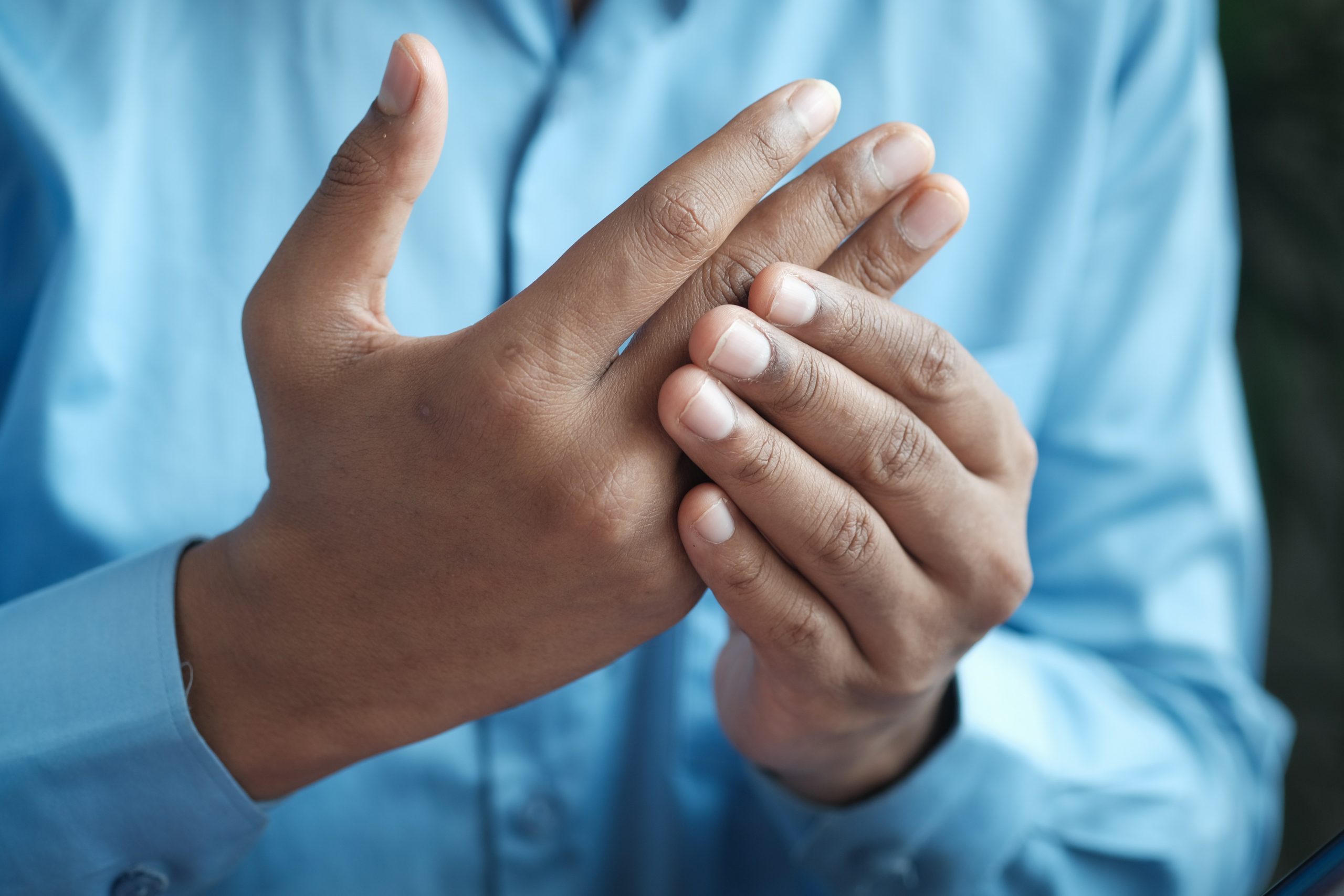When arthritis pain happens, the last thing you want to do is move. But when you don’t move, the pain often ends up getting worse. However, movement is a key piece when it comes to combating arthritis pain.
At the same time, there are various self-management strategies that can help you overcome arthritis pain and get back to the activities you love. In this article, we’re going to dive headfirst into all of this, including what arthritis is exactly, signs of arthritis, treatment, and more.
What is Arthritis?
Arthritis technically refers to an array of conditions that cause joint inflammation. In fact, this term is used for about 200 conditions impacting your joints and the surrounding areas.
The most common types of arthritis include osteoarthritis and rheumatoid arthritis.
Osteoarthritis is typically referred to as the “wear-and-tear” arthritis. This type naturally happens as you age. The cartilage at the joints becomes worn down, which leads to painful bone-on-bone grinding.
Meanwhile, rheumatoid arthritis is an inflammatory condition. Those who are most likely to be diagnosed with rheumatoid arthritis fall between 30 to 60 years of age. This is often due to hormonal fluctuations that happen during this time of life, specifically for women as they transition into menopause.
Rheumatoid arthritis is actually an autoimmune condition. This means that the body’s cells are attacking areas of the joints, leading to pain and inflammation.
Signs of Arthritis
According to the Arthritis Society, signs of arthritis may include:
- Stiffness, pain, and swelling at one or more joints
- Morning stiffness that lasts longer than an hour
- Pain and stiffness that increases with sedentary activity but subsides with movement
- Decreased range of motion
The Arthritis Society further adds that some other occasional signs of arthritis may include weight loss, fatigue, fever, or anemia.
Typically, arthritis also impacts more than one joint. Yet, this may vary depending on the type of arthritis you’re experiencing.
And don’t worry. If you’re experiencing arthritis, you aren’t alone. About one in five people have arthritis. And amongst these statistics, individuals with arthritis are four times more likely to have lower perceived health scores.
The good news is that there are things you can do about arthritis pain. In fact, we’ve got 5 tips to help you manage it and feel better.
Treatment for Arthritis Pain: 5 Tips & Tricks
Arthritis pain doesn’t necessarily have to hold you back (nor should it!). It all comes down to what you do. So, it’s time to muster up some motivation and start trying out the following five strategies to reduce your pain and lead the life you want.
TIP #1: Get Up & Stretch
Arthritis pain and stiffness is often worse in the morning. Yet, this doesn’t mean you should laze around and avoid moving. In fact, stretching before you even get out of bed can help ease some of this muscular tension causing pain and discomfort.
If you’re feeling really ambitious, try easing into a gentle and short Pilates or yoga session. This will help you avoid pain later in the day, as well as help you alleviate that morning all-too-common morning stiffness.
TIP #2: Use Hot & Cold Therapy
When it comes to arthritis, hot and cold therapy both have their place. Heat helps reduce muscular tension, increases circulation, and improves flexibility. Meanwhile, cold therapy can help decrease your pain.
In many therapeutic settings, contrast baths are used to help decrease arthritis pain and other symptoms in the hands or feet.
To do this, you’ll need two tubs of water, one cold and one hot. Place your feet or hands in one tub at a time and for one to three minutes, then switch tubs and repeat. Most rehab specialists recommend doing this for at least 20 minutes. That way, you get the best of both worlds!
TIP #3: Move Regularly
As previously mentioned above, movement is a pivotal piece for combating arthritis pain. However, you don’t want to do just any movement. For example, exercise that increases pain is never a particularly good idea.
Instead, gentle strength training can help build muscle around the affected joints, offering more support and leading to less pain. You may also want to consider cardio activities that are easy-on-the-joints, such as swimming, biking, or walking.
For the most part, you should avoid activities, such as running or jumping, since these can place unnecessary pressure on affected joints. In turn, doing these activities can lead to flare-ups and increased pain.
TIP #4: Maintain a Healthy Weight
Excess weight places stress on the body. It means your body and its systems have to work that much harder. And it also places more weight on arthritic joints.
This can actually accelerate certain types of arthritis, such as osteoarthritis, since wear and tear happens much faster with more force on these joints.
The simple fix? Maintain a healthy weight!
By doing so, you won’t only be giving your joints a serious break but you’ll also be doing your overall health a huge favour. Research shows that obesity is linked to various chronic diseases, such as diabetes, heart disease, liver and kidney disease, depression, and more.
If you have weight to lose, stick to a healthy and balanced diet and ensure you perform regular exercise that is easy on the joints. For more information, we highly recommend talking to your doctor or healthcare provider to determine the best plan to help you achieve a healthy weight.
TIP #5: Reduce Stress
Stress is a completely natural part of life. We all experience it at one point or another. However, chronic stress can have a serious impact on your health and your pain levels.
How? Stress leads to muscular tension. Increased muscular tightness may cause increased arthritic joint pain. Studies also show an association between stress and perceived pain levels. This means that during stressful times, you might have higher perceived pain levels than normal.
Some great ways to combat stress in your life include:
- Meditation
- Deep Breathing Exercises
- Journalling
- Yoga
- Walking
- And more!
Who To See for Arthritis Pain
What if the pain doesn’t go away? This is where experts come into play. From physiotherapy to massage therapy, there are a variety of options for dealing with arthritis pain. At Corydon Physiotherapy, we offer both physiotherapy and massage therapy, as well as nutrition and dietician services to help you combat pain and maintain a healthy lifestyle.
We work with you to find a pain management strategy that works for you and your life. Ready to book your appointment with Corydon Physiotherapy? Call us at (204) 925-0380, email us at corydonp@mymts.net, or book online by using our self-serve online booking system.




